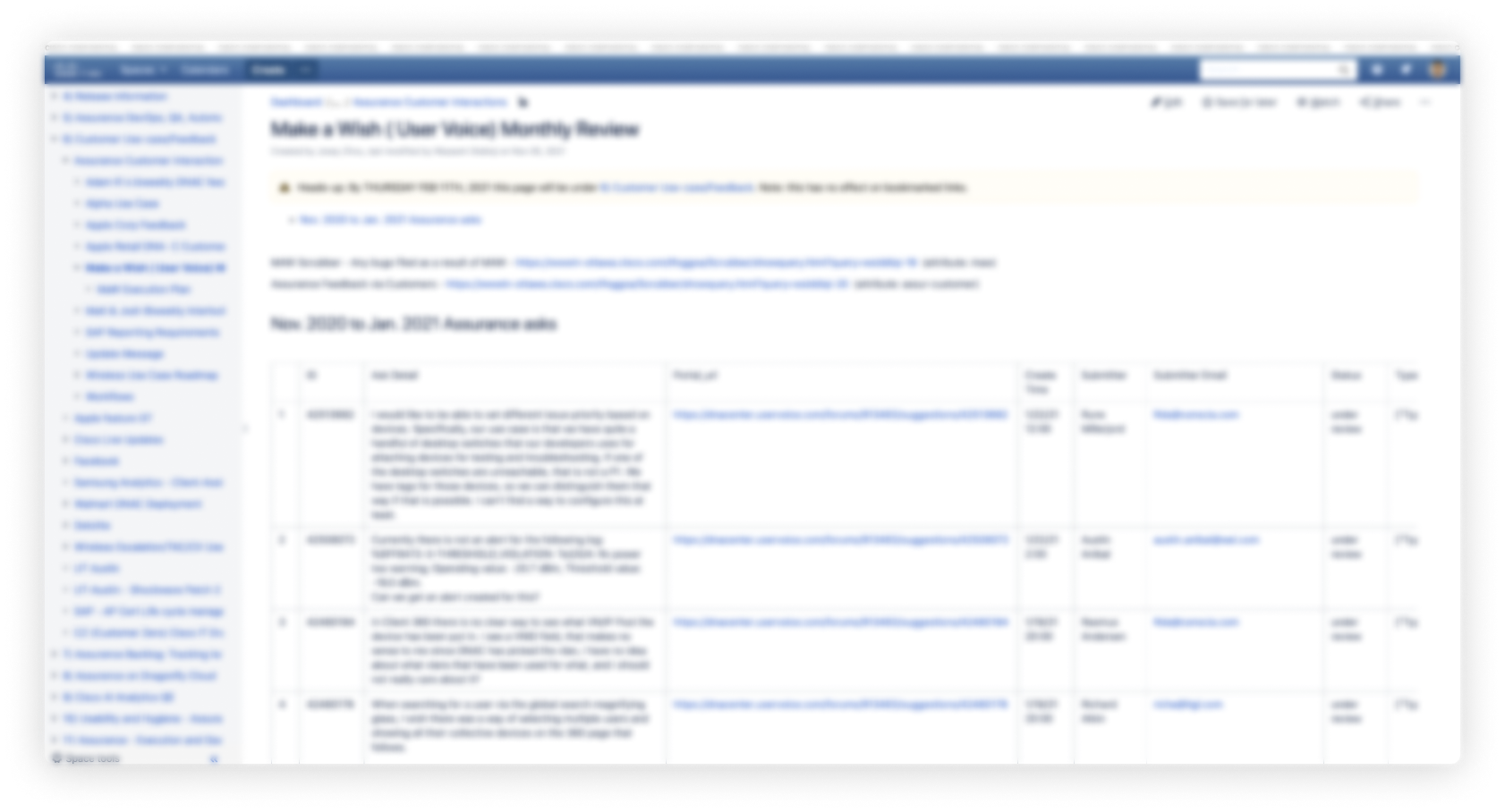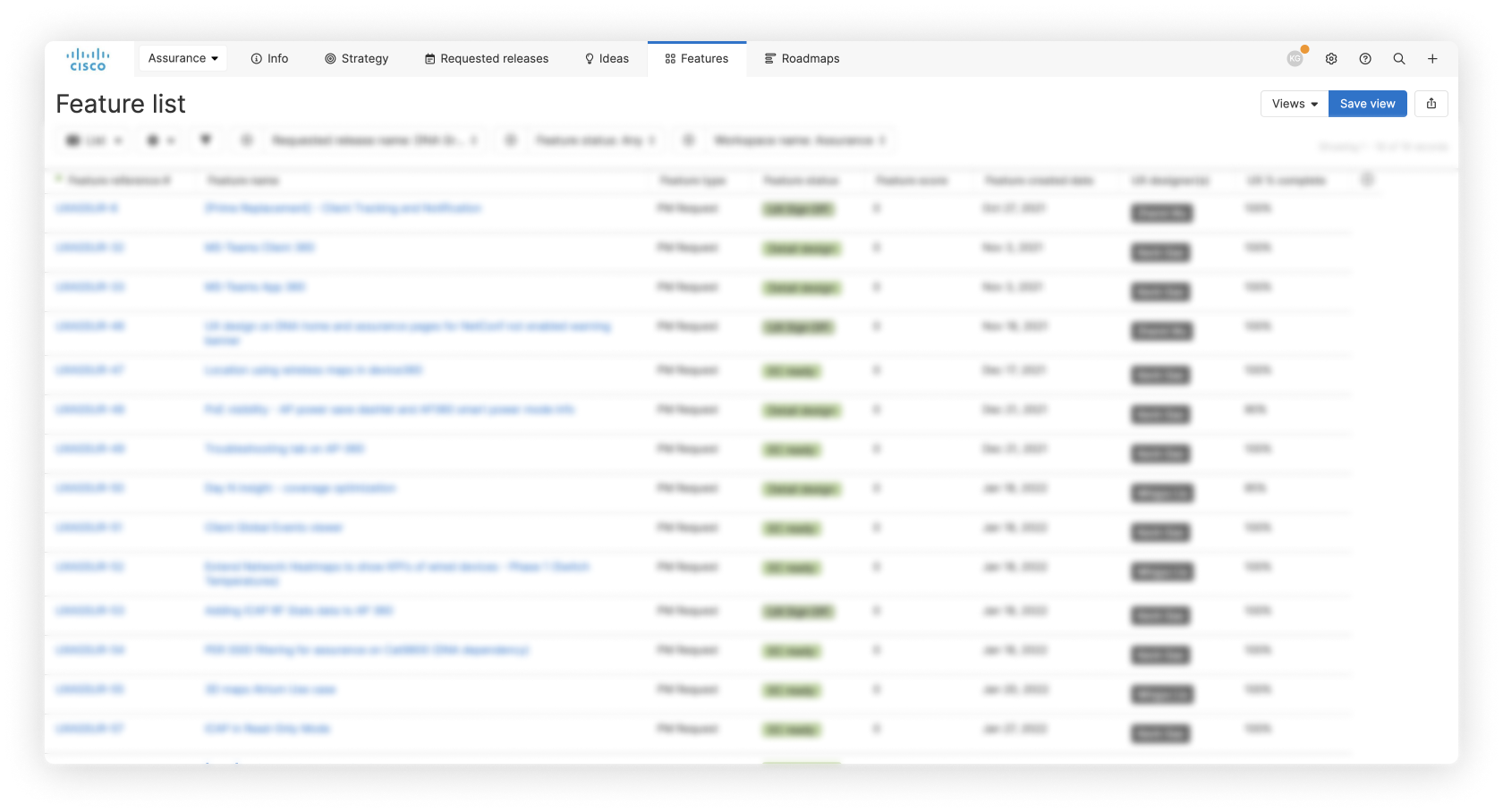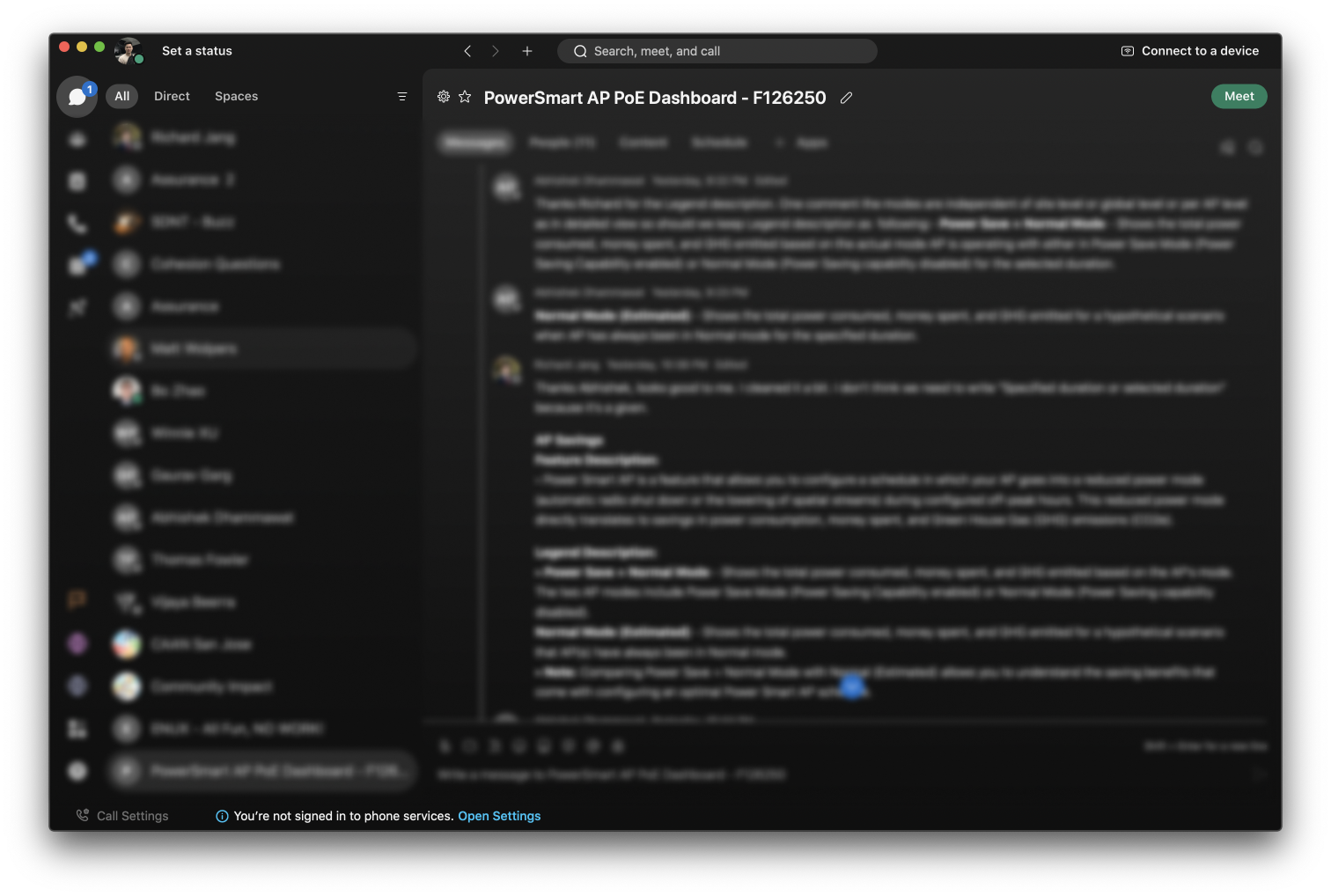DNA-Center
I led the initiative to introduce root cause analysis in our product for large enterprise customers such as Apple & Facebook. This also led the team to discover a larger problem: manual troubleshooting. This is a look at how our team created several features to ease the troubleshooting workflow for network operators and administrators.
Team
Cisco - DNA-C Assurance
Apple - Retail Network Operations
Timeline
Nov 2020 - Feb 2021+
What is DNA-C?
The Product
DNA-Center is one of many Cisco software products that give visibility to network telemetry for enterprise network customers who run a variety of network sizes ranging from 100 devices to 100,000 devices. Assurance is a part of DNA-Center that focuses on the troubleshooting and monitoring aspect of the user’s configurations and device family.
“Assurance provides actionable insights into network operations and utilization, determines root causes of the problems, and drives guided remediation efforts”
Goals
Primary Goal
Simple Troubleshooting Experience
We want our users, especially P1 large enterprise users to drill down from a specific issue to quickly identify the root cause of a problem, and resolve it in timely fashion.
Measurable Goals
Quantitative: Advantage License subscriptions, DNA-C Assurance heavy user renewal rates, Internal awards
Qualitative: Direct user feedback, P1 user testimonials
Make a Wish (Documentation)
User Requests
In our product, we have “Make a Wish” requests where customers can directly give feedback on our user experience or offer wishes for items to be included in the next implementation cycle. Myself, the PMs, and Engineering leads were involved in the prioritization of these wishes and selected the appropriate asks to be promoted to features based on the severity of the use case, the business impact of the customer, and the number of asks on related topics.
For documentation, we created multiple Wiki pages to capture new feature requests and the resourcing needed. AHA pages to update progress % on design and engineering. And multiple Webex chat groups to communicate between cross functioning teams.
Research
Bi-weekly sessions
Our research process focused mainly on bi-weekly sync ups with the Apple retail operations team to identify pain points in the live retail scenario. We worked with our users to craft user journey maps to better understand how troubleshooting actions are performed at the ground level.
Key Findings
In a physical retail store, there is a huge issue with interference amongst APs and other devices in the same geographical location
Delays in receiving telemetry information causes troubleshooting to always be one step behind from live events
Hand holding is needed for complex sets of information
Information Architecture
An important aspect of creating new features is seamlessly integrating new functionality in the existing framework. Users need to be able to execute workflows with the same mental model from previous product versions. Mapping out the current IA allows us to pin point where our entry points can be for new workflows.
Assurance Concept Map



“DNA-C gives me loads of information but I just can’t connect the dots when multiple issues or alerts are raised.”
User Journey Map
3D Heatmap Visualization
Assurance IA
Troubleshooting User Flow
Sketches & Wireframes
Structure & Hierarchy
We regularly validated and tested the low fidelity wireframes with our users to ensure the prototypes were solving the initial goals during research and scoping phase.
Based on the IA review, there were two main entry points to include these features: Device 360 page & Issue Troubleshooting section. Device 360 would be the entry point to the device comparison feature, which allows users to directly compare telemetry between two or more devices, which solves the problem of troubleshooting in context. The event viewer lives in the issues dashboard, which solves our secondary goal of visibility: giving users live populated data to give a birds eye view of issues and problems.
Design System & Final Designs
Cohesion Visual design
All elements on the mockups utilized our Cohesion design system, where individual components could be transferred into engineering implementation through our instructional database. Our design system makes implementation consistent, scalable, and efficient.
Measurement Goals
6% Y/Y Revenue for DNA-C
70% Renewal Rate in Advantage License (Includes AI Analytics, Power over Ethernet, & Comparison/ Event Viewer features)
12% Increase in New Advantage License users
2021 Q3 Cisco Customer Success Award (Kevin Gao)
Final Thoughts
What i’ve learned
Customer feedback is essential to our design process, as it drives the design direction and principles we use during this iterative cycle. However, as product designers we need to zoom out and understand the full user journey to discover new pain points that may not be as obvious to the user’s current mental model.
Serving as the UX Lead for this effort, I learned the effort of clear communication by aligning all stakeholder needs (PM, Eng, Design) and setting measurable goals. The ability to manage those relationships and provide clear documentation contributed to the overall success of this feature.
Demo Implementation




